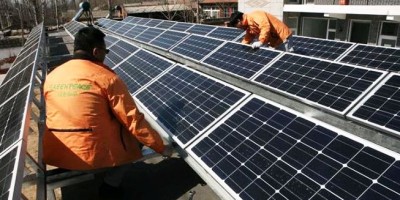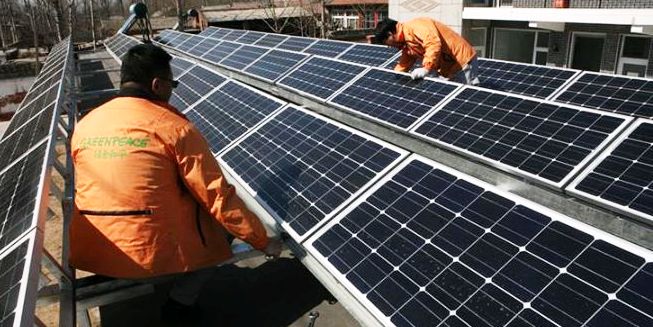BeyondHeadlines News Desk
New Delhi: Greenpeace India, today released its compelling report “Rooftop Revolution: Unleashing Delhi’s Solar Potential” disclosing Delhi’s potential for solar power at 2 gig watts (GW) using only 1.6 per cent of the city’s roofspace1. The report, released by formed Chief Justice of India, A P Shah, charts a green and viable path for Delhi to move towards energy security.
 Co-authored with Bridge to India, the report reveals that by achieving the 2 GW potential the city can generate 4500 million kilowatt hours of solar power every year, meeting 16 per cent of its electricity needs. This can bridge the ever increasing gap between demand and supply of energy. It can also insure us against the dirty, unsustainable, uncertain and costly electricity from conventional sources like coal and diesel.
Co-authored with Bridge to India, the report reveals that by achieving the 2 GW potential the city can generate 4500 million kilowatt hours of solar power every year, meeting 16 per cent of its electricity needs. This can bridge the ever increasing gap between demand and supply of energy. It can also insure us against the dirty, unsustainable, uncertain and costly electricity from conventional sources like coal and diesel.
“Rooftop revolution is not just a report but a vision to realise Delhi as a green capital powered by clean and sustainable sources of energy like solar. This report comes at a time when the national capital is facing serious electricity crisis and rising tariffs. This report provides an alternative pathway. What is required is political intent to convert this vision into a reality,” said Anand Prabhu Pathanjali, energy campaigner, Greenpeace India.
The largest potential for solar power rests with residential buildings at 1.2 GW or 49 % of the total solar potential, followed by industrial buildings at 15 %, government buildings and public facilities at 13 %. The report not only maps the potential and viability of the various building types falling under different tariff categories but also details business models and scenarios under which solar rooftop is advantageous.
For residences, solar rooftop is still very complex and needs some fiscal support.
However, the increasing power tariffs from grid electricity and the falling prices of solar systems make it a potential and sustainable source of energy. In 2012 alone, power tariffs in Delhi increased by about 20 per cent and are expected to rise by 25 per cent in the next five years. On the other hand, solar prices have fallen by almost 50 per cent in the last two years.
Significantly, government buildings, due to their proximity to each other and large roof space, facilitate bundling of projects that can enable large project sizes to the tune of 2000 kilowatt power. Large solar systems reduce the per kilowatt cost considerably making solar already viable for government buildings. Hence, there is clear viability for solar power in Delhi without long term capital subsidy as the scenarios in the report illustrate.
“Solar power is now not about if but about when. It is inevitable as the energy system of the future. What was lacking was the insight into the potential that the city holds. This report fills that gap and is an exhaustive document that outlines the new energy structure for Delhi. This report provides arguments and data to the Delhi government, distribution companies, and its people to show why solar makes sense for the city,” said Dr Tobias Engelmeier, managing director, Bridge to India.
The report was released at the Renewable Energy Champions Conclave. Former Chief Justice of Delhi High Court, Justice A. P. Shah and former Union Power Minister Suresh Prabhu felicitated Resident Welfare Associations (RWA), institutions and civil society for being the first to pledge their rooftop’s for solar power and supporting a strong solar rooftop policy for Delhi.
Among the renewable champions felicitated were hotel Le Meridien, Indira Gandhi National Open University, Tamil Nadu Bhawan, Holy Family Hospital, URJA group of RWAs and one Bhagidari RWA. Greenpeace has been running a campaign “Switch on the Sun” to promote renewable energy as a sustainable and viable solution to Delhi’s power crisis.
“A city which aspires to be a world class city needs to secure its energy through clean energy sources. Solar rooftop offers a locally available energy generation choice. Implementing this roadmap can ensure that the second richest state of the country becomes a progressive city at the forefront of a modern energy system,” added Pathanjali.









